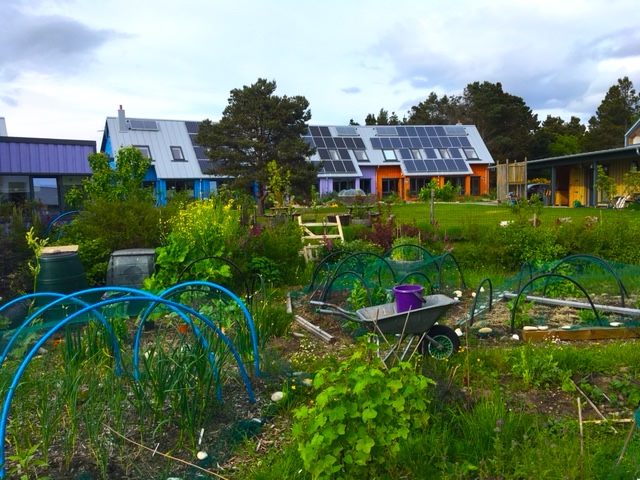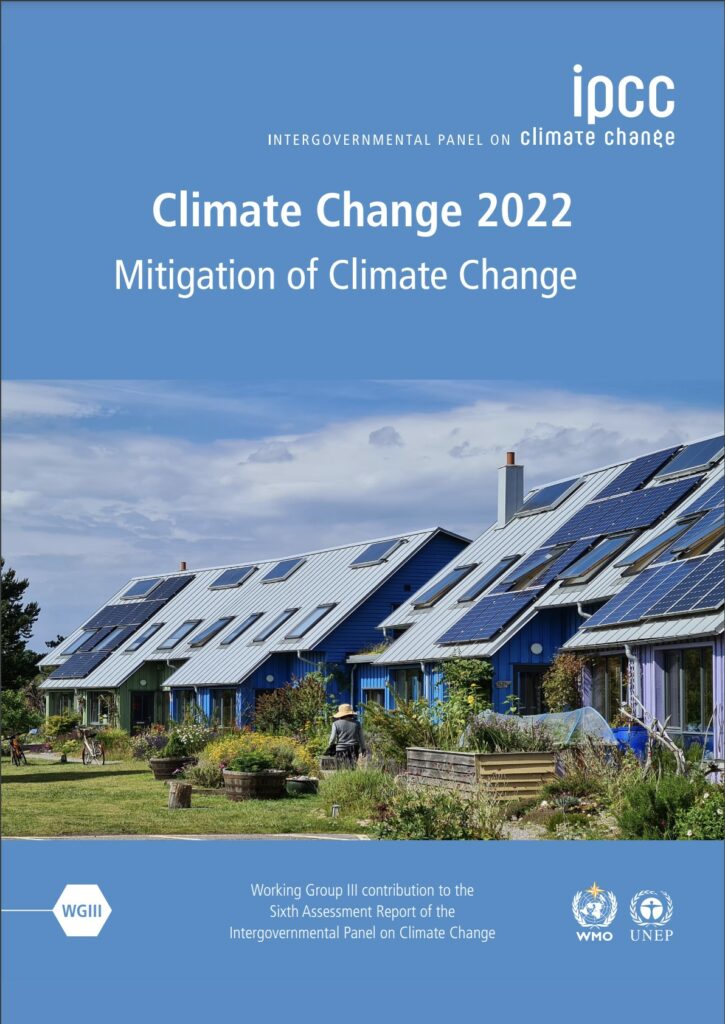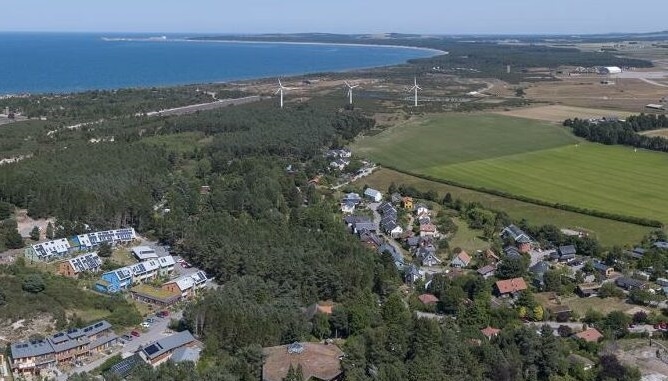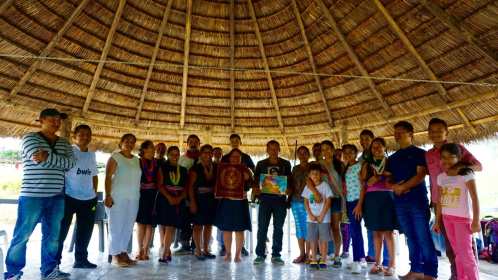Earlier this month the International Panel for Climate Change, IPCC, published the final part of their Sixth Assessment Report, Mitigation of Climate change – featuring the Findhorn Ecovillage Community on the cover.



The picture shows the East Whins cohousing cluster, part of the Findhorn ecovillage, with superinsulated adjoining homes built with ecological materials. The buildings face the equator for maximum solar gain. They are topped with solar PV and water heaters and have rain barrels and integrated greenhouses. Each home is fronted by outdoor raised bed gardens, paved biking/walking trails, and a common green. Living in Findhorn, I also know that East Whins is hooked up to our cooperative wind farm and has five charity-owned affordable and accessible housing units, as well as its own district heating biomass boiler, shared laundry, community space and kitchen, library, orchard, and a playground. Its residents use sociocracy to govern their shared life and assets. It’s not perfect – but it is a very real example of what a life designed with the mutual thriving of human and non-human nature can look like at our northern latitude.
And it’s not just a picture. As GEN founder, Elder and longstanding climate activist, author and ecovillager Albert Bates points out in a blog post which I highly recommend reading:
“Even more significant than the cover art was the final paragraph in the conclusion section of the 3676-page report. In the considered opinion of the 1000+ top climate scientists, what the world needs most is ecologically aware and socially innovative experimental communities that network with each other and provide educational outreach and positive examples of a better world.”
The paragraph Albert refers to says “Indeed, transitions require an examination of the role of values, attitudes, beliefs and the structures that shape behaviour, as well as the dynamics of social movements and education at multiple levels. Likewise, technological and social innovation both play an important role in enabling transitions, highlighting the importance of multi-institutional and multi-stakeholder actors building institutional support networks, facilitating collaboration between sectors and actors, and promoting learning and social change.
Systems-oriented approaches, which holistically address the intersections among climate, water and energy (for instance), have significant potential to reveal and help avoid trade-offs, foster experimentation, and deliver a range of co-benefits on the path towards sustainable development.“
This is us. Ecovillages are designed to do this – and have been doing it for decades. GEN started in 1995. This year Findhorn Ecovillage celebrates 60 years as a community. At the same time, that it is an ecovillage in the global north that graces the cover of the report is perhaps indicative of things that are still not right in the global discourse on climate change. Many of our traditional and indigenous member ecovillages have existed for centuries and experienced the effects of climate change earlier than most. Yet, globally, the expertise, knowledge, and experience of communities like theirs are often sidelined in favour of science and tech-heavy solutions and interventions that continue to exacerbate injustice. In GEN, these ecovillages are lighting the way for others, acting as teachers and elders in their regions, countries, and globally. Maybe the cover should have been one of them?

Bafut ecovillage, Cameroon 
Ghana Permaculture Institute 
Musu Runakuna, Colombia
Still, I celebrate this real win for our movement and feel deeply called to get even better at addressing social and ecological justice, diversity, and inclusion in our work and ways of being together.
Instead of writing more, I would like to point you to a few great resources I have come across:
- Albert Bates’ blog for a detailed analysis of the report
- Amreka Sharma writing for Greenpeace on how climate justice finally takes centre stage in the last round of IPCC reports
- This video from Extinction Rebellion translating the often technical language of the report to something more clear and easy to take in – this one about the second part of the assessment, on Impacts, Adaptation and Vulnerability.
- This short video from climate scientists youtuber zentouro and Climate Adam explaining the headlines of the Mitigation report in a quick and often humourous 8 minutes
- And finally, for inspiration, beauty and resourcing in these times of challenge and change, an equinox poem by adrienne maree brown

Leave a Reply